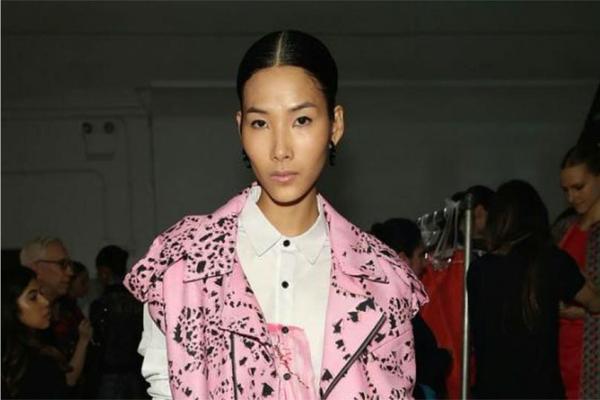By Abigail Elise@theabigailelise
Epson is probably not the first tech brand you'd think of when it comes to fashion. But the Japanese electronics company -- known for printers -- is using New York City's Fashion Week to make a comeback by applying its printing expertise to the world of haute couture.
Eleven international designers are using a dye-sublimation printer from Epson for their collections' prints, patterns and graphics. Epson's SureColor F-Series technology that uses heat to transfer dye onto materials such as fabric, paper or plastic.
“Unlike screen printing, the speed in which we are able to turn textiles around is incredible,” designer Emilio Sosa, the creator of the Esosa line, said. “The ink colors are applied in a single plane rather than sequentially in layers, allowing us to use the technology to explore new possibilities with imagery.”
While each designer’s style was vastly different from another’s, Epson’s printer technology was behind the patterns rendered on each fabric.
“Designers will be able to create things more quickly, because they won’t be tied to the very slow process of fabric printing they are used to,” New York City-based fashion designer Leonor Silva said. “Their capacity to create will also shoot through the roof because they won’t have as many obstacles. I think this is the way to the future and, in a couple of years, we won’t believe how long it took to create printed fabrics before.”
Printing fabric digitally is to textiles as 3D printing is to product manufacturing. Rather than using large cylinders to lay down each color in a fabric design, it allows designers to create unique, one-of-a-kind prints that incorporate images with more complexity and nuance than traditionally manufactured fabric. Designer Alexander McQueen was one of the first to use the technology , which is coming down in cost and going mainstream.
One form of digital texting printing designed for polyester fibers, dye sublimation, is gaining more currency because of the introduction of lower cost, more reliable, printers, as well as the emergence of fashion-appropriate polyester fabrics, said Stephen Fraser, co-founder of North Carolina-based digital printing company Spoonflower.
Prints created via dye sublimation are dry and ready to use as soon as they exit the printer. There are also fewer moving parts of the printer that can break down, keeping maintenance costs down.
"This method of printing textiles is now available to everyone, when it was once only available to a knowledgeable elite," Fraser said. "It allows designers to experiment with unique colors and designs. It allows a whole new element of expression in their fashion."
Epson isn’t the only company to utilize this type of technology. Canon, Kodak, Sony and Fujifilm directly compete with Epson in the dye-sublimation printing arena, a technology once limited to industrial or high-end commercial printing.
Dye-sublimation printers can be expensive; small models cost $25,000, and high-volume models as much as $300,000. Still, a number of designers we spoke with liked the idea of using the technology in their fashion lines.
“The speed ... allows us to create the repeat in our fabrics, without any restrictions,” Sosa said, adding that the more advanced the technology involved, the more forward-thinking fashion will be. “The future of fashion will be in the technology of the fabric. Smart textile will add value to the wearer.”
Backstage at Epson's Digital Couture Showcase
Photo: Courtesy/Epson
